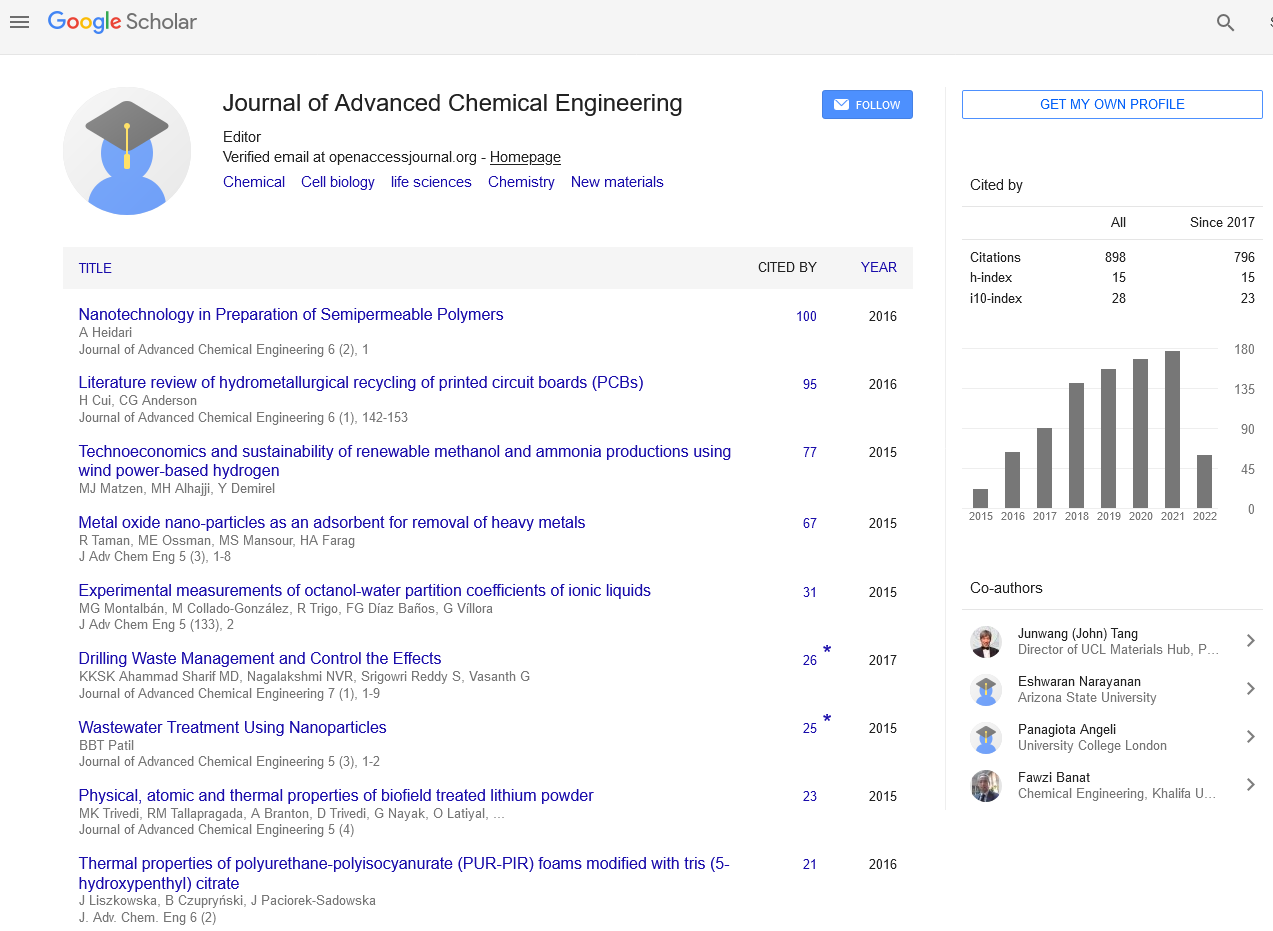Indexed In
- Open J Gate
- Genamics JournalSeek
- Smithers Rapra
- RefSeek
- Directory of Research Journal Indexing (DRJI)
- Hamdard University
- EBSCO A-Z
- OCLC- WorldCat
- Scholarsteer
- Publons
- Geneva Foundation for Medical Education and Research
- Google Scholar
Useful Links
Share This Page
Journal Flyer

Open Access Journals
- Agri and Aquaculture
- Biochemistry
- Bioinformatics & Systems Biology
- Business & Management
- Chemistry
- Clinical Sciences
- Engineering
- Food & Nutrition
- General Science
- Genetics & Molecular Biology
- Immunology & Microbiology
- Medical Sciences
- Neuroscience & Psychology
- Nursing & Health Care
- Pharmaceutical Sciences
Abstract
Fast-acting, Broad-spectrum antimicrobial polymers to combat a growing global health concern
Richard J Spontak
Adherence of pathogens such as bacteria and viruses on various surfaces routinely leads to subsequent transmission to new hosts, significantly promoting the proliferation of potentially harmful organisms. This sequence is particularly worrisome in the case of antibiotic-resistant pathogens, which are becoming a global threat to human health. According to the U.S. Centers for Disease Control and Prevention, 1 out of every 20 hospital patients is affected by nosocomial infections, subsequently resulting in 100,000 deaths annually in the United States alone. Out of these, about 23,000 deaths are attributed to drug-resistant pathogens such as methicillin-resistant Staphylococcus aureus (MRSA). Strains often referred to as “nightmare superbugs” with highly elevated resistance to last-resort antibiotics have been reported all around the world in 2017. While metals (oxides) have been used as surfaces or introduced as nanoparticles into a broad range of substrates to serve as antimicrobial agents and eradicate a wide range of pathogens, they all suffer from eventual reservoir depletion or microbial resistance, and they tend to be pathogen- or condition-specific. Moreover, if not covalently bound or tightly embedded, these nanoparticles can leach into the environment and introduce additional health concerns. In this study, we first discuss a photodynamic polymer composed of an olefinic thermoplastic elastomer modified with zinc tetra(4-N-methylpyridyl) porphine (ZnTMPyP4+), a photoactive antimicrobial, and show that this combination is effective at inactivating 5 bacterial strains including MRSA, 3 different viruses, and a fungus upon exposure to noncoherent light. By achieving antibacterial and antiviral efficacies of at least 99.89%, this methodology, which relies on the formation of singlet oxygen, constitutes a non-specific and highly successful route by which to eliminate harmful pathogens upon simple exposure to visible light and oxygen. Another effective strategy employs only water and a pH jump to kill 99.9999% of antibiotic-susceptible/resistant bacteria and several viruses in just 5 min.
Published Date: 2020-09-19;


